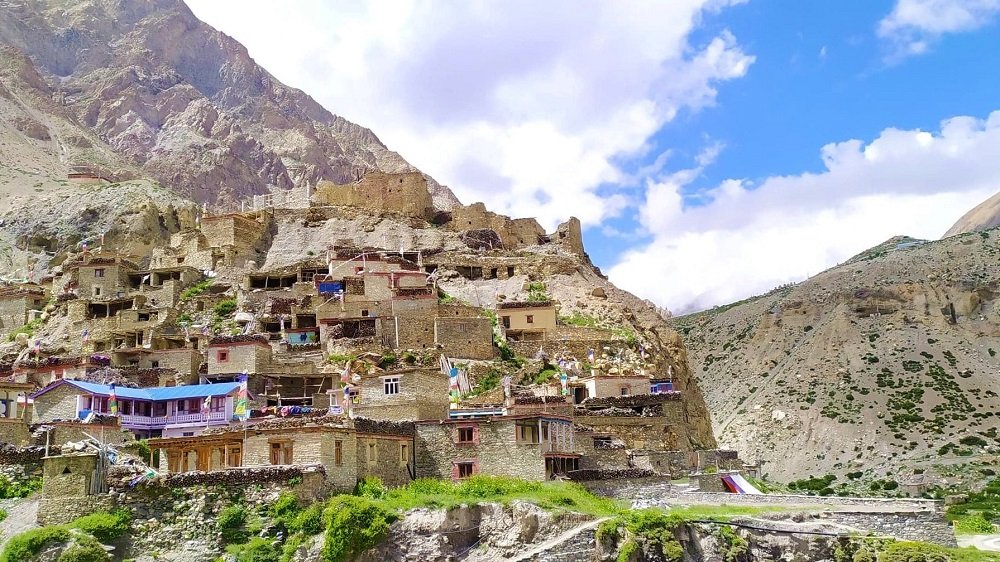Phu village manang
0 comments

Phu Village, Manang, Nepal
Phu Village, tucked away in the remote Manang District of Nepal, is one of the most secluded and picturesque settlements in the region. Located within the Nar-Phu Valley, this village offers an authentic experience of the untouched culture and lifestyle of the high Himalayas. Situated at an elevation of approximately 4,080 meters (13,386 feet) above sea level, Phu is a haven for trekkers seeking an off-the-beaten-path adventure.
Geographic and Cultural Overview
Phu Village is nestled amidst a dramatic landscape, surrounded by towering cliffs, rocky terrain, and snow-capped peaks. The village is part of the restricted Nar-Phu Valley area, which was only opened to trekkers in 2002. It retains a distinct Tibetan influence due to its proximity to the border and the historic migration of Tibetan people. The local inhabitants, known as the Phu people, practice Buddhism, and the village is adorned with Gompas (monasteries), chortens, prayer flags, and mani walls.
The villagers primarily sustain themselves through agriculture, animal husbandry (mainly yaks and sheep), and trade with neighboring regions. Due to its remote location, Phu remains largely unaffected by modern developments, preserving its unique medieval atmosphere. The stone houses, narrow alleyways, and ancient temples give visitors a glimpse into a way of life that has endured for centuries.
The Nar-Phu Valley Trek
The journey to Phu Village is a significant highlight of the Nar-Phu Valley Trek, which is often combined with the Annapurna Circuit Trek. This trek is considered challenging due to its altitude and rugged terrain, but it rewards adventurers with stunning scenery and rich cultural experiences. The trek typically starts from Koto, near Chame in the Manang District, before heading into the remote valley.
Some of the key attractions along the trek include:
- Kang La Pass (5,306 meters / 17,408 feet): A high mountain pass that offers panoramic views of the Annapurna and Dhaulagiri ranges.
- Tashi Lhakhang Monastery: A historic monastery located in Phu, where visitors can learn about Tibetan Buddhism.
- Nar Village: Another remote village in the Nar-Phu Valley, known for its distinct architecture and rich cultural traditions.
Best Time to Visit
The ideal time to visit Phu Village is during the spring (March-May) and autumn (September-November) seasons. During these periods, the weather is relatively stable, with clear skies offering breathtaking views of the surrounding mountains. In contrast, winter brings heavy snowfall, making the region difficult to access, while the monsoon season (June-August) can result in landslides and muddy trails.
Conservation and Permits
As a protected area within the Annapurna Conservation Area (ACA), trekkers are required to obtain special permits to enter the Nar-Phu Valley. The region is restricted to preserve its natural and cultural heritage. Trekkers need both an Annapurna Conservation Area Permit (ACAP) and a Nar-Phu Valley Restricted Area Permit, which can only be obtained through a registered trekking agency in Nepal.
Conclusion
Phu Village offers a unique blend of stunning natural beauty, rich cultural heritage, and the opportunity for deep exploration into a remote part of Nepal. It remains one of the last bastions of unspoiled Himalayan culture, making it an ideal destination for those seeking solitude, adventure, and a glimpse into the traditions of Tibetan Buddhism.
Visiting Phu is like stepping back in time, where the isolation from modern civilization has preserved a way of life that feels timeless. The experience of trekking to this hidden gem leaves a lasting impression on those who seek to connect with Nepal’s most pristine and culturally rich landscapes.
Comments